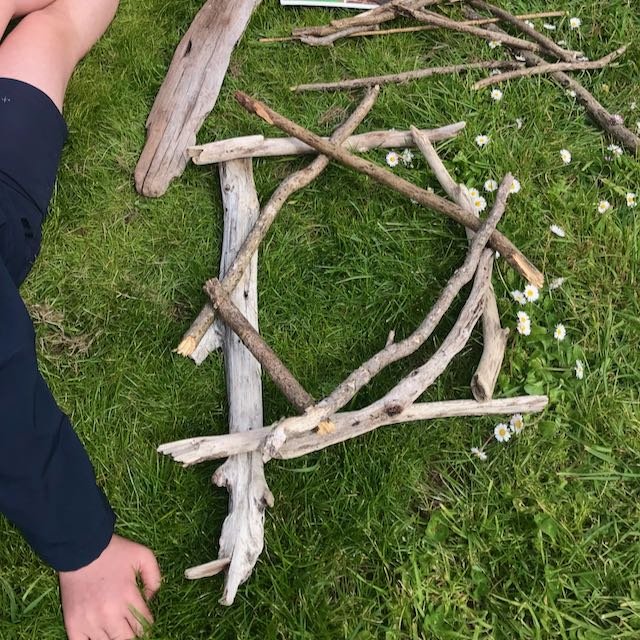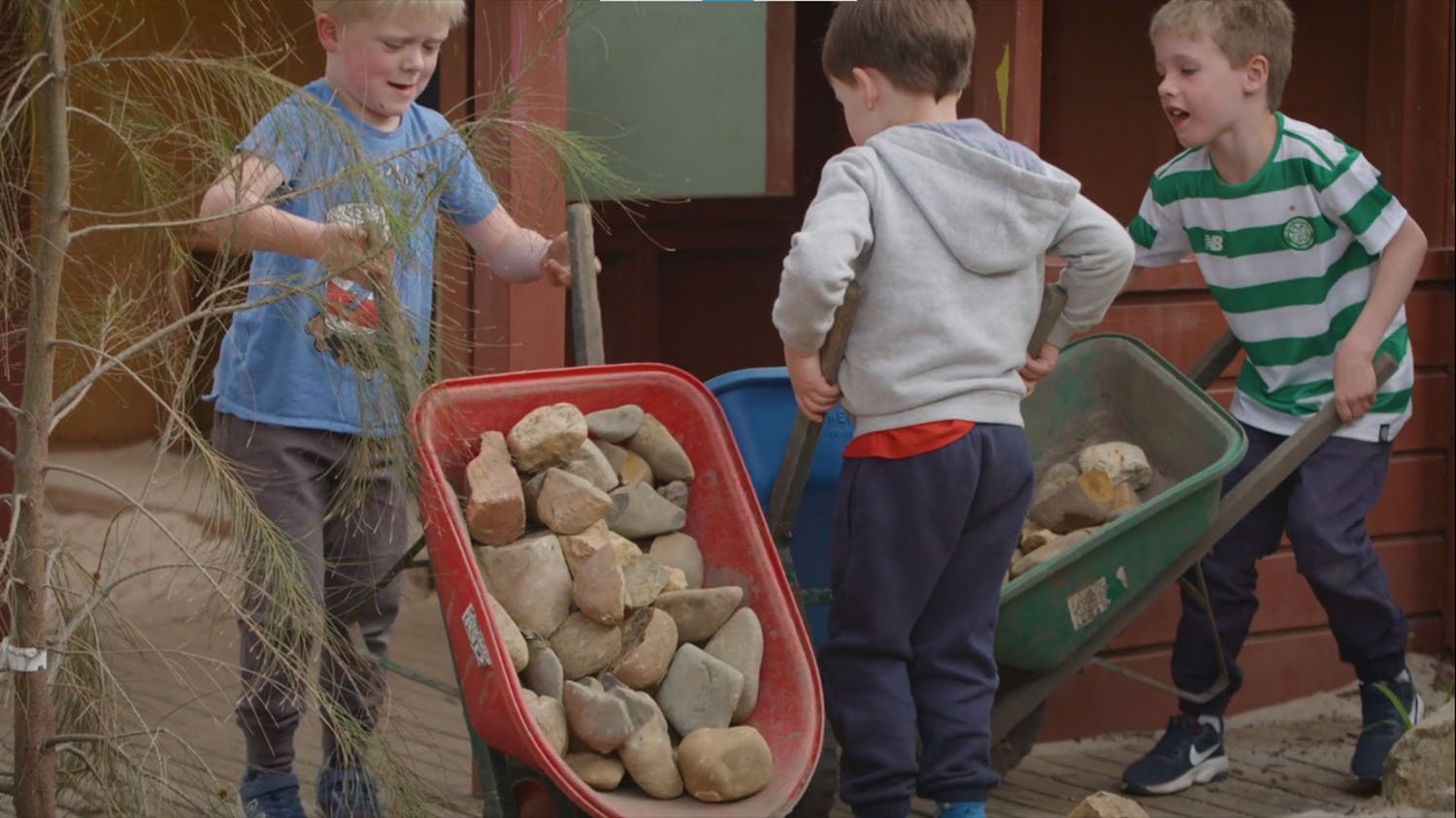
Supporting your journey . . .
Book Recommendations
Free to Learn by Peter Gray
”In Free to Learn, developmental psychologist Peter Gray argues that our children, if free to pursue their own interests through play, will not only learn all they need to know, but will do so with energy and passion. Children come into this world burning to learn, equipped with the curiosity, playfulness, and sociability to direct their own education. Yet we have squelched such instincts in a school model originally developed to indoctrinate, not to promote intellectual growth.” - Goodreads
The Research
Low Childhood Nature Exposure is Associated with Worse Mental Health in Adulthood
”This study suggests that childhood NOE exposure might be associated with mental well-being in adulthood. Low levels of childhood NOE exposure were associated with worse mental health, higher perceived amount of green and blue spaces, and with lower importance of NOE in adulthood.”
Associations between Children’s Risky Play and ECEC Outdoor Play Spaces and Materials
"The possible benefits of risky play regarding children’s development have been in several researchers’ interest in the last few decades. Some of this research indicates that risky play may increase children’s physical activity [26], improve motor/physical competence [27,28], increase spatial and perceptual skills [29], and enhance their ability to assess and manage risk appropriately [30,31,32]. Children seem to have clear strategies for reducing the potential harm in exposing themselves to risk in play [33,34,35]. Brussoni et al. [26] found mainly positive outcomes in their systematic review on risky outdoor play and children’s health. On the other hand, being restricted from the experiences and learning that risky play provides might increase the chance of anxiety, both in childhood [36,37] and in adolescence and adulthood [38,39,40,41,42].”
Risky-play at school. Facilitating risk perception and competence in young children
"Overall, it is now well accepted that risky play is necessary for a child in order to develop risk-taking skills and learn how to cope with risky situations (Brussoni, Olsen, Pike, & Sleet, 2012). This way, a child can obtain risk competence. Significant elements of risky play in children are: attempting something never done before; feeling on the borderline of ‘out of control’ often because of height or speed and overcoming fear (Stephenson, 2003). Depriving children from age-adequate risk play will hinder normal child development (Alexander, Frohlich, & Fusco, 2012) and is being associated with the development of fear, discomfort and dislike of the environment (Sandseter & Kennair, 2011).
When the risk is worth it: the inclusion of children with disabilities in free risky play.
"Reasonable risk taking in play is a fundamental factor in gross motor, cognitive and emotional development (Sandseter, 2011). Adults’ concerns about children safety as well as social and environmental factors may severely limit children’s opportunities to engage in free risky play, compromising their overall health and wellbeing”
Risky Outdoor Play systematic review supplement
"The systematic review revealed overall positive effects of risky outdoor play on a variety of health indicators and behaviours, most commonly physical activity, but also social health and behaviours, injuries, and aggression."
Risky Play and Children’s Safety: Balancing Priorities for Optimal Child Development
"There is evidence that children learn risk management strategies for themselves and their peers as a result of risky play experiences. Observational studies of children at play found they exposed themselves to risk but displayed clear strategies for mitigating harm [68,76]. Australian children, for the most part, engaged in behaviours that were well within their current capabilities [8]. Children appeared aware of potential dangers and adjusted activities accordingly. Notably, children drew on their risk experiences not only to develop understanding of their own constitutions and skills, but also of playmates. These understandings facilitated support for each other’s risk engagement and safety [76]. Sandseter and Kennair [25] theorized that children’s engagement in risky play has an adaptive function in reducing fear of stimuli (e.g., heights) through repeatedly naturally and progressively exposing themselves to the stimuli. They argued that if children were not provided with sufficient risky play opportunities, they will not experience their ability to cope with fear-inducing situations. Furthermore, they will maintain their fear, which may translate into anxiety disorders."
What is the Relationship between Risky Outdoor Play and Health in Children? A Systematic Review
"There was also an indication that risky play supportive environments promoted increased play time, social interactions, creativity and resilience [85,88]. These positive results reflect the importance supporting children’s risky outdoor play opportunities as a means of promoting children’s health and active lifestyles.”
How nature play spaces support positive child development.
“In order to provide meaningful nature play opportunities for children (and adults) living in urban environments, it is essential to design accessible nature play spaces that replicate nature, and its play experiences, as close as possible. Nature play spaces that incorporate natural elements, are minimally structured, and include a lot of loose parts, encourage more self-directed and child led play.”
"We often throw around the term ‘risky play’ as though it was a category of play like social play or gross-motor play. But it is not. Taking risks is simply one of the things children do when they are playing and, because a significant amount of playing is about pushing boundaries and extending ourselves, it turns out that most play is risky in one way or another.” - Marc Armitage
“There has never been a more important time for children to be accessing nature, for all the major health and wellbeing benefits. It is imperative that children and families are supported to have ongoing access to natural environments, and well- designed nature-based spaces, within their local communities.” - Cath Fitzhardinge OT
Organisations
Nature Play
Nature Play Australia is an alliance of not-for-profit associations established to increase the time Australian children spend in unstructured play outdoors and in nature.
Therapeutic Horticulture Australia
We are a national membership association representing therapeutic horticulture in Australia. We support people and organisations in the use of horticulture for health and wellbeing through networks, training, education and research.
Free Downloads
Urban Discovery Downloads
We have an ever growing range of downloads to support you on your journey.
“In this Toolkit, the references to policy and guidance are mainly in the Scottish context, which is on a path of embracing play-based pedagogies and outdoor playing and learning. We hope the Toolkit will be useful wherever you are and can be adapted to your context.”
Inspiring Articles
Dr Rachael Sharman is a senior lecturer and researcher in psychology, specialising in child/adolescent development. Rachael's research is focused on the optimal and healthy development of the paediatric brain and has covered the neuro/psychological impacts of: dietary practices of parents and their children; physical activity; attention deficit hyperactivity disorder; genetic disorders; concussion and childhood trauma.
- Free-range kids could become healthier, happier adults
Nature Is Medicine. But What’s the Right Dose?
These days, the link between cumulative time spent in natural settings and health outcomes—including the big one, longevity—is solid. There’s data on cancer and heart disease, anxiety and depression, immune function and stress hormones, and more. “It’s not just one study,” points out Harvard epidemiologist Peter James, “it’s 500 studies.”








